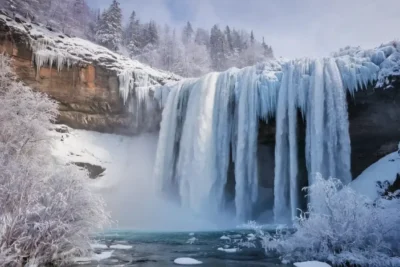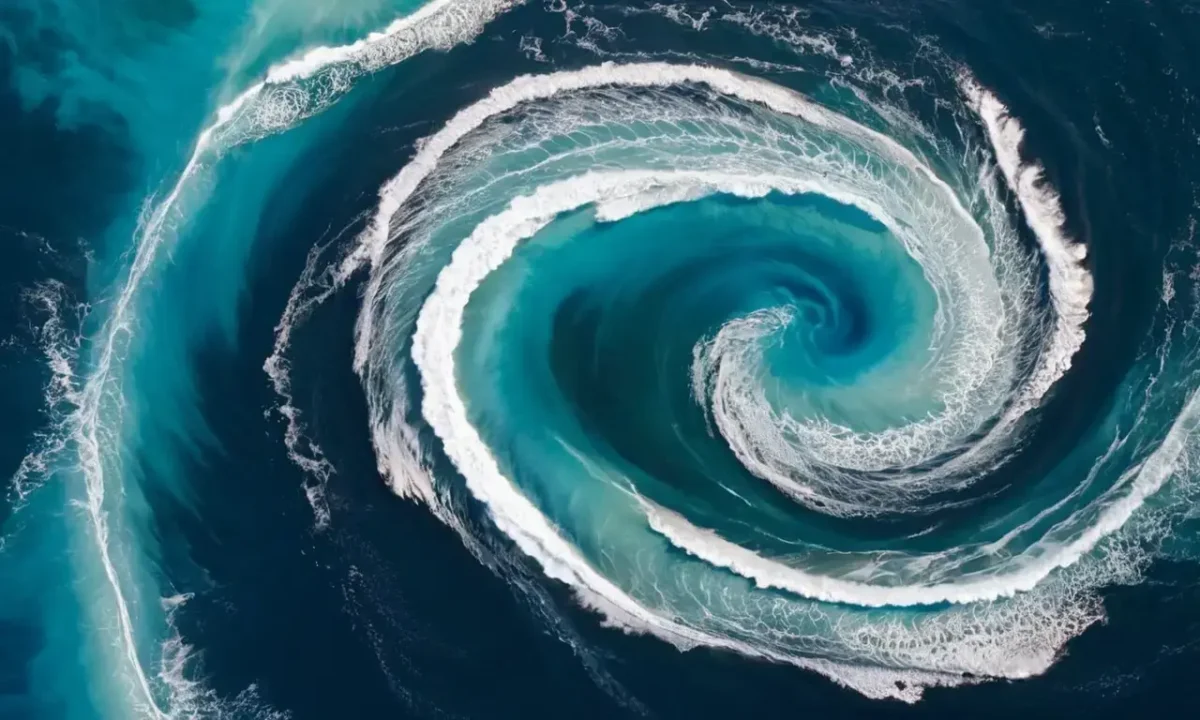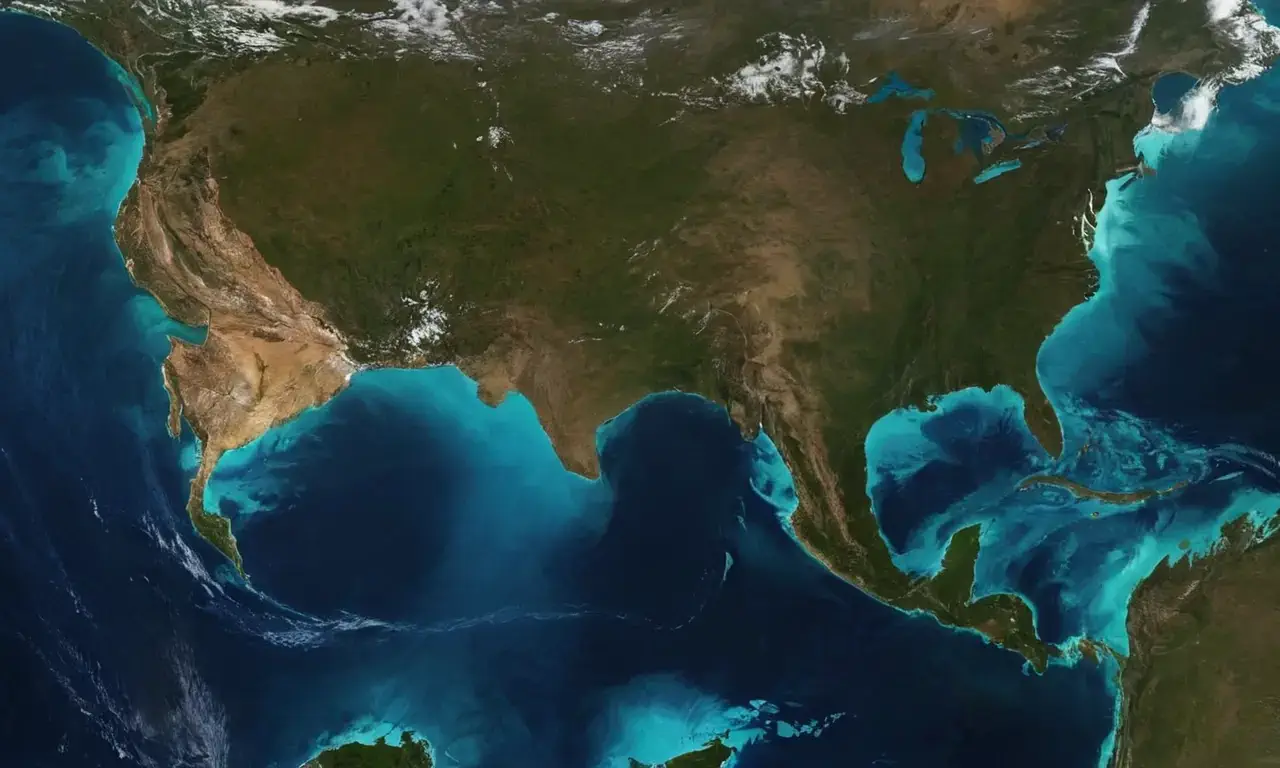
Atlantic-Pacific Mixing: A Complex Ocean Dance

The oceans, covering over 70% of Earth's surface, are dynamic systems constantly interacting through a complex interplay of physical processes. Among these interactions, the mixing of the Atlantic and Pacific Oceans stands out as a fascinating phenomenon with significant implications for global climate and marine ecosystems. This article delves into the intricate dance between these two colossal bodies of water, exploring how they interact, the factors influencing this interaction, and the methods used to study it.
The objective of this article is to provide a comprehensive overview of ocean mixing, focusing on the Atlantic-Pacific Ocean meeting point. We will discuss various aspects like ocean currents, salinity gradients, thermohaline circulation, surface phenomena, research techniques, and challenges in understanding this complex process. By examining these facets, we aim to shed light on the intricate relationship between these two oceans and their impact on our planet's environment.
Ocean Currents and Mixing Processes
Ocean currents are vital for mixing, acting as conveyor belts that transport water masses across vast distances. These currents are driven by various factors, including wind patterns, temperature differences, and Earth's rotation. The interaction of these forces creates a complex network of currents that influence the exchange of heat, nutrients, and marine life between different ocean basins.
One prominent example is the North Atlantic Gyre, where warm surface waters from the tropics flow northward towards Europe, while cold water sinks in the deep ocean. This process contributes to the global thermohaline circulation, a major driver of climate change. Similarly, the Humboldt Current in the Pacific Ocean carries nutrient-rich water from the equator towards the coast of South America, supporting rich marine life and influencing regional climates.
Mixing processes are not limited to large-scale currents; smaller-scale interactions also play a role. For instance, coastal upwelling brings cold, nutrient-rich water to the surface near continental shelves, enriching ecosystems and impacting local fisheries. These localized mixing events contribute to the overall dynamic nature of ocean systems.
Salinity Gradients and Water Movement
Salinity is another crucial factor influencing ocean mixing. The salinity of seawater varies due to factors like evaporation, precipitation, river discharge, and biological processes. Areas with high evaporation rates, such as deserts or coastal regions, tend to have higher salinity levels. Conversely, areas receiving abundant rainfall often have lower salinity due to freshwater input.
These salinity gradients create pressure differences that drive water movement. Water flows from areas of low salinity to areas of high salinity, seeking equilibrium. This process is particularly evident in the Atlantic Ocean's North and South Atlantic Gyres, where denser, colder water sinks towards the equator while lighter, warmer water rises towards the poles.
The interaction between these salinity gradients and ocean currents creates a dynamic system that constantly reshapes marine ecosystems. For example, the Gulf Stream, a powerful warm current in the North Atlantic, is driven by the interplay of temperature differences and salinity gradients. This current plays a crucial role in transporting heat from the tropics to higher latitudes, influencing weather patterns across continents.
Thermohaline Circulation and Global Impact
Thermohaline circulation (THC) is a global ocean conveyor belt that drives large-scale mixing and influences climate on a planetary scale. The process involves the interaction of water density with temperature and salinity gradients.
When water warms, it becomes less dense and rises to the surface. Conversely, when water cools, it becomes denser and sinks towards the depths. This cycle is further influenced by evaporation, which increases salinity and contributes to sinking waters. These processes create a continuous circulation pattern that transports heat from the tropics to higher latitudes and influences weather patterns worldwide.
The Atlantic Meridional Overturning Circulation (AMOC), a major component of THC, plays a crucial role in regulating global climate. This current carries warm surface water northward across the Atlantic Ocean, impacting weather patterns in Europe and North America. Disruptions to the AMOC could have significant consequences for global climate change.
Surface Phenomena and Their Significance

While mixing occurs gradually over time due to various oceanic processes, surface phenomena like fronts can create visually distinct boundaries between different ocean basins. These fronts are often associated with changes in wind patterns, temperature gradients, and atmospheric pressure systems.
For instance, the North Atlantic Current interacts with the Gulf Stream, creating a zone of strong currents that influences weather patterns across Europe. Similarly, the California Current brings cold water from the north towards the coast of California, impacting marine life and coastal ecosystems. These surface phenomena highlight the dynamic nature of ocean mixing and its impact on various aspects of our planet's environment.
Observational Techniques for Studying Mixing
Studying ocean mixing requires a combination of observational techniques to capture the complex interactions occurring at different scales. Satellites provide valuable data on sea surface temperature, salinity, and currents, allowing researchers to monitor large-scale patterns and identify areas of significant mixing.
Oceanographic research vessels equipped with advanced sensors collect detailed information about water properties like temperature, salinity, and oxygen levels. These measurements are crucial for understanding the physical processes driving mixing and identifying potential hotspots of interaction between different ocean basins. Additionally, acoustic Doppler current profilers (ADCPs) measure currents at various depths, providing valuable insights into the vertical structure of ocean mixing.
Research Methods and Data Analysis
Researchers employ a variety of methods to study ocean mixing, including numerical modeling and laboratory experiments. Numerical models simulate ocean circulation patterns based on physical laws governing fluid dynamics. These models allow researchers to explore different scenarios and understand how various factors influence mixing processes.
Laboratory experiments recreate oceanic conditions in controlled settings, allowing scientists to study the interaction between water masses under specific conditions. For example, experiments simulating upwelling can help researchers understand how nutrient-rich waters interact with surface currents and impact marine ecosystems. Data analysis techniques are crucial for extracting meaningful information from these complex datasets, helping researchers identify patterns and make informed conclusions about ocean mixing dynamics.
The Role of Freshwater Inputs in Mixing
Freshwater inputs play a significant role in influencing ocean mixing processes. Rivers discharge large volumes of freshwater into the oceans, altering salinity gradients and impacting water circulation patterns. Coastal upwelling is another example where freshwater runoff from rivers or melting glaciers contributes to mixing by bringing nutrient-rich waters to the surface.
These freshwater inputs can have both local and global impacts on ocean ecosystems. For instance, in coastal regions with high river discharge, increased nutrients can stimulate phytoplankton growth, supporting marine life and influencing fisheries productivity. However, excessive freshwater input can also lead to changes in salinity gradients, potentially impacting marine species adapted to specific conditions.
Conclusion
Ocean mixing is a complex process that plays a crucial role in regulating global climate, supporting marine ecosystems, and shaping the distribution of nutrients across the planet. Understanding these processes is essential for predicting future environmental changes and managing our oceans sustainably. Continued research efforts utilizing advanced technologies and innovative methodologies will further enhance our knowledge of ocean mixing dynamics and its implications for life on Earth.
Leave a Reply





Related Links